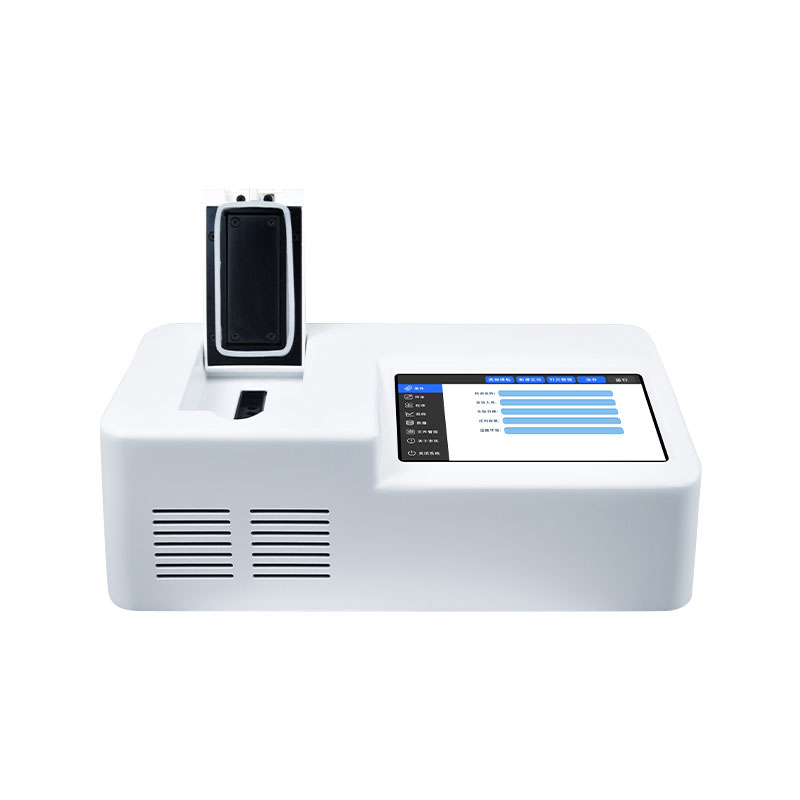Shandong Fengtu IOT Technology Co., Ltd
Sales Manager:Ms. Emily Wang
Cel,Whatsapp,Wechat:+86 15898932201
Email:info@fengtutec.com
Add:No. 155 Optoelectronic Industry Accelerator, Gaoxin District, Weifang, Shandong, China

Sales Manager:Ms. Emily Wang
Cel,Whatsapp,Wechat:+86 15898932201
Email:info@fengtutec.com
Add:No. 155 Optoelectronic Industry Accelerator, Gaoxin District, Weifang, Shandong, China

Model:FT-RL1
Brand:fengtu
The Meat discriminator is easy to use, easy to operate and easy to control.It can detect the origin of meat (chicken, duck, goose, cattle, sheep, pig, horse, donkey, etc.).
1.Instrument features of Meat discriminator
1.Small size, light weight, easy to carry.Easily meet the needs of out-of-town experiments.
2.Built-in 7-inch high-definition capacitive screen PDA, touch screen operation, easy and fast.
3.Marlow's high-quality Peltier refrigeration chip, combined with the German high-end PT1000 temperature sensor and the temperature control mode of the electrical resistance heating compensation edge, has a maximum heating speed of 7°C and a maximum cooling speed of 5°C, which greatly shortens the experimental time.
4.3s fast lighting mode for the entire board to ensure the consistency of hole positions in experimental results.
5.Simple and intuitive software guidance makes it easy to start detection experiments.
2.Application fields of Meat discriminator
basic scientific research
Pathogen detection
Adulteration of meat products
GMO testing
Food safety testing
Drug development and rational drug use
gene expression
water body monitoring
3.Technical parameters of Meat discriminator
Sample capacity: 8x0.2ml, supports 8 strips
Applicable consumables: common transparent PCR consumables, 8x0.2ml tubes, 0.2ml single tube
Reaction system: 5-120ul reaction mode system
Heating/cooling module: imported semiconductor thermoelectric module
Temperature control range: 4°C-99°C
The average rate of temperature rise and fall is ≥2°C/second
Temperature control accuracy: ≤±0.1°C
Temperature uniformity: ≤±0.2°C
Number of temperature control areas: multiple points (2 points)
Number of gradients: 0
Gradient temperature range: None
Number of gradient holes: None
Excitation light source: maintenance-free LED
Excitation light wavelength range: 400-700nm
Detection components: imported photoelectric detector
Number of detection channels: standard 1 channel (FAM), advanced configuration (optional) (FAM, VIC)
Applicable dyes and probes: FAM/SYBR Green I, VIC/HEX/CY3 (optional), ROX/Texas Red (optional), Cy5, TAMARA (optional)
Software functions: Fluorescence quantitative PCR system software; real-time amplification reaction curve function; specific specimen real-time reaction curve display; data analysis function;
Automatic judgment function of yin and yang results; graphical display function.
Noise: <45 dB
Screen size: 7 inches (HD)
Touch screen: capacitive
External USB: supports data import and export
Hot lid: automatic pressure adjustment
Appearance size: 290(W)*308(L)*130(H)
Box size: 75 long * 38 wide * 19 high cm
Net weight: about 3Kg
What is the meaning of water and rain situation? In fact, the water and rain situation refers to the water and rain situation. Water condition refers to the condition of river water, such as river flow, water level, flow rate, etc.; while rain condition refers to the condition of rainfall in a certa...
Environmental Monitoring Station captures the concentration of negative oxygen ions in the air around the clock, relying on IoT technology to provide data support for environmental health and ecological value....
Micro-meteorology refers to the atmospheric conditions within small-scale areas near the earth's surface. Key monitoring parameters include wind speed, wind direction, air temperature, humidity, atmospheric pressure, and optionally, rainfall. These parameters exhibit significant gradient variati...
A Small Automatic Weather Station is an integrated and complete meteorological monitoring system. It boasts significant advantages in microclimate environment monitoring, as it can accurately capture changes in meteorological elements within specific areas and provide reliable support for meteorolog...